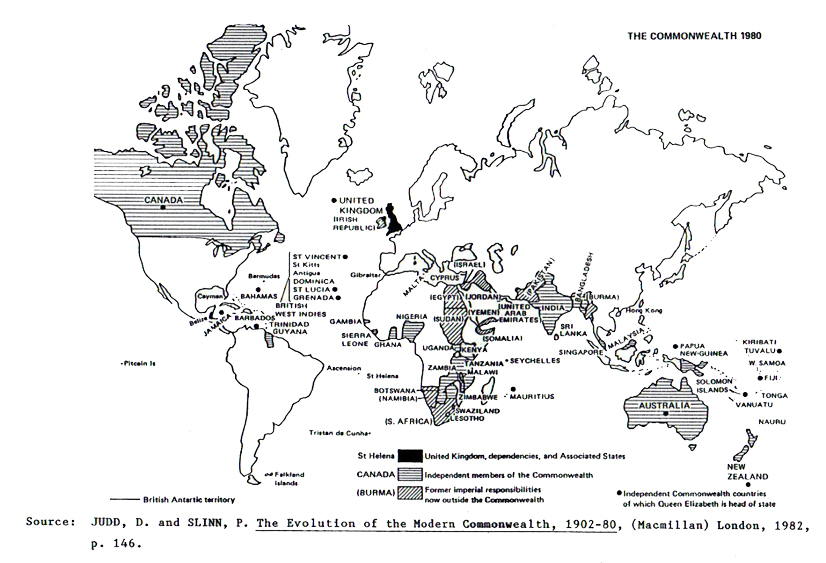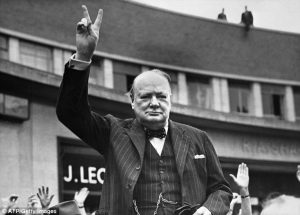From the British Empire to the Modern Commonwealth

The Path to Independence
The Indians set the example for the political independence of the developing world. The achievement of recognition as a nation for the Indians came after a long and difficult struggle, whereas similar achievement for the white colonies came much more easily. The Indians had been frustrated in their claim to Dominion status throughout the early twentieth century. It was the Japanese eruption into south-east Asia which brought many more political changes than the British political elite had ever contemplated in the 1930s. “The sudden and striking victory of the yellow man imposed a drastic rethinking as to the nature of imperial control in the area, and had reverberations around the whole of the colonial world, whether British, French or Dutch. The precipitous surrender of the British at Singapore in 1942 signalled to many colonial peoples the fragility of the British Raj.”1
However, when the British returned to their Asian empire after the Japanese surrendered, it was felt by the British political elite, in particular after Churchill’s defeat, that India could easily slip from their hold. The Indian naval mutiny in 1946 provided a foretaste. It was understood that India could not be held by force. Moreover, the return of the former imperial powers to south-east Asia was being seriously restrained as the outburst of Japan was viewed by the conquered territories that after all imperial powers could be challenged. Such challenges gave birth to the doctrine of nationalism. It meant fight for independence. Indian national sentiments, however, had already been influenced even before the Japanese came; so in 1945 the British started planning for India’s acceptance as an independent member of the commonwealth. This solution was bedevilled by serious religious differences between the two main communities of the sub-continent. “With no chance of reconciling the two groups, as evident in the Muslim ‘direct action’ day in 1946, the only answer seemed to be the division of the landmass into two separate states, which division unfortunately brought communal killings and large-scale migration.”2 Therefore, as a result of these negotiations there emerged in 1947 two new Dominions, India and Pakistan. The concept of the Commonwealth as a white man’s club had been broken. This opened the way for the advance to nationhood of all the ‘coloured’ colonies. However, no actual timetable in the late 1940s and early 1950s had been worked out. Only at some vague time in the future would the dependent colonies reach nationhood.
Another point which is worth noting is the further change that India imposed on the structure of the Commonwealth in 1949. “Queen Victoria may have been pleased to receive in 1875 the title of Empress of India, and Indian princes may have been delighted to participate in George V’s coronation durbar in 1911, but the new leaders of independent India were not prepared to acknowledge the British king as their emperor. Hitherto, a vital bond of the commonwealth-empire structure had been the notion of common allegiance to the British crown by all members. But that formula did not suit the Indians who wanted to have their own head of state – in fact, to be a republic with a president.”3



